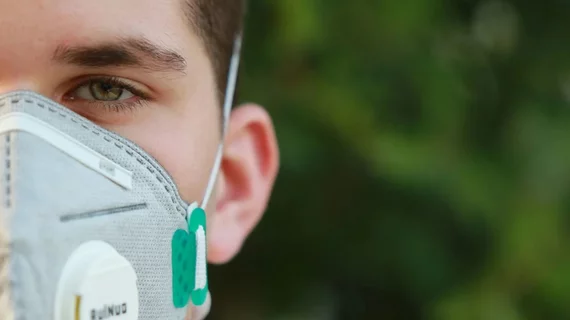Pain, pride and a renewed sense of purpose: Radiology residents reflect on their time in a COVID care unit
During the initial COVID-19 outbreak, many hospitals were forced to redeploy radiology residents to the front lines of the crisis. The experience had a profound effect, and two trainees chose to share their personal perspectives in a new piece published Friday.
Blake Christianson and Vishal Sinha were both imaging residents at New York-Presbyterian Hospital when in the spring, the pandemic took hold of their city. They were asked to leave the security of their reading room and move to the intensive care unit to help treat patients with COVID-19.
Christianson and Sinha began their work filled with fear, anxiety and questions of what would happen if they caught the virus. That quickly turned into a sense of purpose as they worked alongside nurses and physicians who traveled across the country to help, including a group from Cayuga Medical Center in Utah.
“With the support of this team, no task was too trivial. We rounded, wrote notes, placed orders, followed up on laboratory exams, and—most importantly—called families,” the pair wrote in Clinical Imaging.
Many visitors, they said, were forced to say goodbye to their family members, not knowing if they would make it through the night. Residents called these groups daily with updates on their loved ones. The desperation, optimism and confusion in their voices is something that still sits with the imaging trainees, they said.
The death of a New York police officer is particularly ingrained in their memories, the pair noted.
“When he did ultimately pass, we'll never forget the surreality of stoically doffing our PPE and going on with our day,” they wrote. “With our computers immediately facing his windowed door, his lifeless body laid waiting for his wife to visit and hold his hand one last time.”
They kept going, however, reviewing imaging findings with their team and planning patient care. Small treatment victories and altered treatment plans made them realize why they initially pursued medicine, they noted.
And the unexpected support from the community felt “overwhelming,” they noted, and sometimes “underserved.” Local restaurants donated food; car and bike companies offered free transportation; and hotels even donated free rooms.
Several weeks later infections slowly decreased and the radiology trainees went back to their reading room with a renewed perspective.
“We returned to our daily schedules with a reinvigorated appreciation for what we do—a reminder that each image is more than an image—it's a life,” they explained. “While we are training to be imagers, we must not forget that first, we are physicians.”

